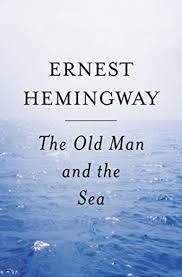April 21 is Holocaust Remembrance Day. If you do not know the history of the Holocaust in some detail, you may think of the Holocaust as the death camps, particularly Auschwitz, where a million Jews died.
During the last four years I have visited Holocaust sites and Holocaust memorials and read the history of the Holocaust in country-by-country detail. The numbers tell a much different story than the Auschwitz-centered narrative of the Nazi death camp. Auschwitz went into operation as a death camp in 1942. Previously, it was a slave labor camp. Half of the Jews killed in the Holocaust, more than three million, were already dead by 1942.
Beginning with the invasion of Poland in 1939, Jews were rounded up and killed by the SS, by German police and by local police in Poland. When the Nazis invaded Russian in June 1941, SS units spread out in conquered territories. The Nazis told local people in eastern Poland, Ukraine, the Baltic States, Belarus and Russia that the property of Jews could be seized by those who killed its Jewish owners.
Jews were dispossessed and murdered by their neighbors. Some were killed on the spot, others were rounded up and shot over pits, sometimes the victims dug the pits. Lviv, Kiev, Minsk, Riga, Vilnius and other cities in the east were the sites of mass shootings of hundreds of thousands of Jews. The shooting was done by tens of thousands of German police, SS men, local police and sometimes German regular army units. Thousands and thousands of men pulled the trigger on a rifle or a pistol and watched a Jew die in front of them.
Almost no one survived the early personal slaughter. By contrast, every death camp had some survivors. There are tales of survivors of Auschwitz. There are almost no survivors of the murders over pits at Babi Yar and other pits of slaughter.
Also, on this day, those who sheltered and saved Jews are honored. They deserve the honor, partly because they are vanishingly rare. There were thousands of these heroes, but they represent less than one in one thousand of the 400 million people who identified themselves as Christians in the lands conquered or controlled by the Nazis during World War II.
In his book “Black Earth: The Holocaust as History and Warning” Timothy Snyder says, “The Christians who showed mercy to Jews … were exceptions in the moral catastrophe that was Christianity during the Holocaust.”
The complicity of Churches began in Germany in 1932 when German Christians supported the openly racist Adolph Hitler who was stoking fear of communism. German Churches followed Nazi racial laws ejecting Jewish Christians from Churches who had converted, sometimes generations before. Jewish Christians were almost totally wiped out in The Holocaust with the full complicity of German Churches.
The Holocaust is a story of mass murder of six million Jews, but from the beginning, the story of the Holocaust of a story of government stripping citizens of rights, it is a story of theft of property, betrayal by neighbors, deportation, enslavement and murder. The Holocaust was not done by machines. The theft and murder was done by millions of men and women who betrayed, robbed and murdered a person right in front of them.










